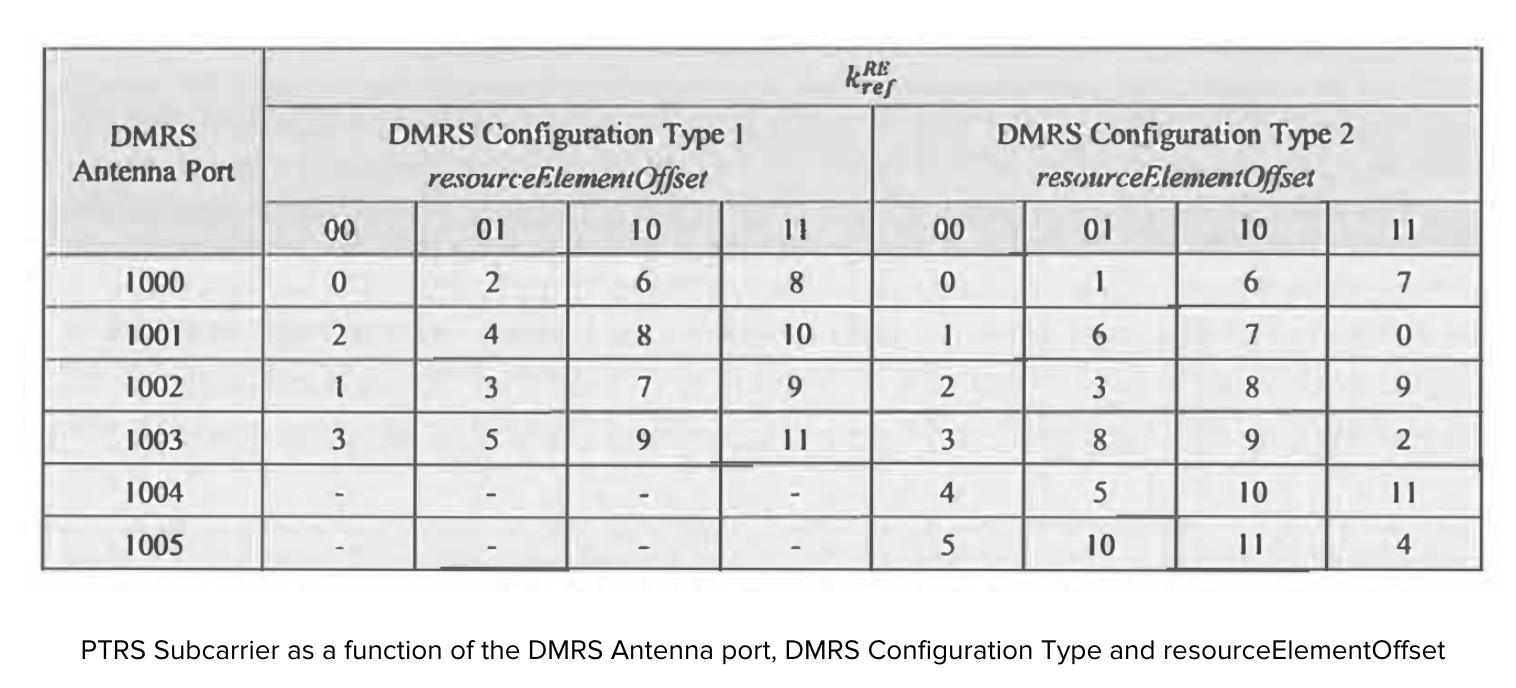5G RADIO NETWORK PLANNING PART-5 UPDATED IN 2024

Introduction 5G Radio Network Planning
In this segment of 5G Radio Network Planning, we explore the importance of the Cyclic Prefix (CP), CSI Reference Signals, and Phase Tracking Reference Signals (PTRS). Understanding these elements is critical for optimizing network performance and ensuring efficient communication.
Cyclic Prefix
- The Cyclic Prefix represents a guard period at the start of each symbol which provides protection against multi-path delay spread. The cyclic prefix also represents an overhead which should be minimised.
- 3GPP TS 38.211 specifies the normal cyclic prefix for all subcarrier spacings, and the extended cyclic prefix for the 60 kHz subcarrier spacing. Specifying the extended cyclic prefix for the 60 kHz subcarrier spacing allows it to be used within both Frequency Range 1 and Frequency Range 2.
- The extended cyclic prefix increases the duration of each symbol because the duration of the cyclic prefix increases while duration of the payload remains constant. The extended cyclic prefix decreases the number of symbols within each slot from 14 symbols to 12 symbols, i.e. physical layer air-interface capacity is reduced.
- The normal cyclic prefix can be used for the majority of deployment scenarios. It should be noted that the normal cyclic prefix at 15 kHz can tolerate a larger delay spread than the extended cyclic prefix at 60 kHz. Thus, when using Frequency Range 1, the normal cyclic prefix at 15 kHz can also be considered as a solution to tolc:rate increased delay spreads. Table 52 and Table 53 within section 2.8 present the normal and extended cyclic prefix durations and their equivalent distances.
- The duration of the cyclic prefix should be greater than the multi-path delay spread. The delay spread depends upon the cell range as well as the propagation environment and the presence of any distant reflectors.
- Small cells, micro cells and indoor solutions typically have delay spreads in the order of 10 to 100 ns, so can use the normal cyclic prefix. Macrocells within urban and suburban areas typically have delay spreads in the order of 1 or 2 μs. This means that macrocells can use the normal cyclic prefix when assuming that macrocells are deployed using Frequency Range 1, i.e. a lower operating band with a lower subcarrier spacing and a longer cyclic prefix duration. Rural areas have a low delay spread when the environment is open and there is line-of-sight propagation. However, the delay spread can also become high as a result of the larger cell range and potentially the presence of any distant reflectors.
CSI Reference Signals
- The CSI Reference Signal is a flexible multi-purpose signal . The requirement for planning will depend upon the use-case and the network implementation. The example, presented within this section is based upon the transmission of CSI Reference Signals for Beam Management, i.e. using them to support beam refinement during the ‘P-2’ phase of Beam Management.
- The network implementation may provide a choice of CSI Reference Signal densities. Table below illustrates that densities of 3, 1 and 0.5 Resource Elements per Resource Block are supported. Figure below illustrates examples of CSI Reference Signals configured with densities of 3 and 1 Resource Elements per Resource Block. Configuring a higher density allows the UE to complete its measurements with increased accuracy. Configuring a lower density increases the scope for frequency multiplexing.

- If Base Stations are deployed with 3 or 4 sectors then the density of 3 Resource Elements per Resource Block can be selected. This helps to maximise the accuracy of UE measurements and provides sufficient scope for frequency multiplexing around the sectors of the Base Station. Frequency multiplexing avoids CSI RS to CSI RS interfaces between sectors.
- If Base Stations arc configured with more than 4 sectors then the density of 3 could still be used but with re-use of the frequency multiplexing positions. Alternatively, the density of 1 could be used to allow up to 12 multiplexing positions.
Phase Tracking Reference Signal (PTRS)
- The Phase Tracking Reference Signal (PTRS) is described for the downlink for tlhe uplink. In terms of Radio Network Planning, the network implementation may allow configuration of the subcarriers occupied by the PTRS. It is preferable for in neighbouring cells to use different subcarriers to avoid PTRS to PTRS interference
- Table below presents the PTRS subcarrier offset for each combination of DMRS Antenna Port, DMRS Configuration Type and resource Element Offset. This table is applicable to the downlink but the same table exists for the uplink with the exception that DMRS antenna ports 1100 to 1005 are replaced by DMRS antenna ports 1 to 5.
- The subcarrier offsets have been specified to ensure that the PTRS uses the same subcarriers as the DMRS. For example, antenna ports 1000 and 1001, with DMRS Configuration Type 1 use even numbered subcarriers for the DMRS, whereas antenna ports 1002 and 1003 use odd numbered subcarriers. The PTRS has not been specified to be used with the DMRS ‘Double Symbol’ configuration. This means that antenna ports 1004 to 1007 are not applicable when using Configuration Type 1, and antenna ports 1006 Ito 1011 are not applicable when using configuration Type 2.

- Figure below illustrates the subcarriers occupied by the PTRS when resourceElementOffset values of ‘00’, ‘01’, ‘10’ and’11' (assuming DMRS Antenna Port I000 and Configuration Type I). PTRS to PTRS interference is avoided if neighbouring cells are configured with different resourceElementOffset values. The set of 4 values restricts the size of the re-use pattern so it is likely that PTRS to PTRS interference will exist between some neighbouring cells. An example strategy could involve configuring each sector belonging to a specific Base Station with different resourceElementOffset values. This would at least avoid PTRS to PTRS interference.

- The table on top illustrates that different combinations of DMRS Antenna Port and resourceElementOffset can lead to equal subcarrier offsets. For example, {Antenna Port I000; resourceElementOffset = ‘01’} and { Antenna Port 1001; resourceElementOffset = ‘00’} both use a subcarrier offset of ‘2’ when assuming Configuration Type 1. The downlink PTRS is transmitted using only a single antenna port so a UE which is configured for 2x2 MlMO and is using DMRS antenna ports 1000 and 1001 will receive the PTRS on only one of those antenna ports
- The PTRS is transmitted within every 200 Resource Block or every 4th Resource Block depending upon the size of the PDSCH/PUSCH Resource Block allocation . This allows frequency multiplexing of the Resource Blocks used by the PTRS. The Resource Block offset is randomised by calculating its value from the RNTI belonging to the UE which is receiving the resource allocation. This means that neighbouring cells using the same PTRS subcarrier offset can avoid PTRS to PTRS interference if the RNTI calculations lead to different Resource Block offsets. This frequency multiplexing will be randomised according to the UE which arc scheduled at any point in time, i.e. some resource allocations may lead to PTRS to PTRS.
Conclusion
Effective 5G network planning hinges on the strategic use of Cyclic Prefix, CSI Reference Signals, and PTRS. By understanding and applying these concepts, network performance can be optimized, ensuring robust and efficient communication.



Comments
Post a Comment